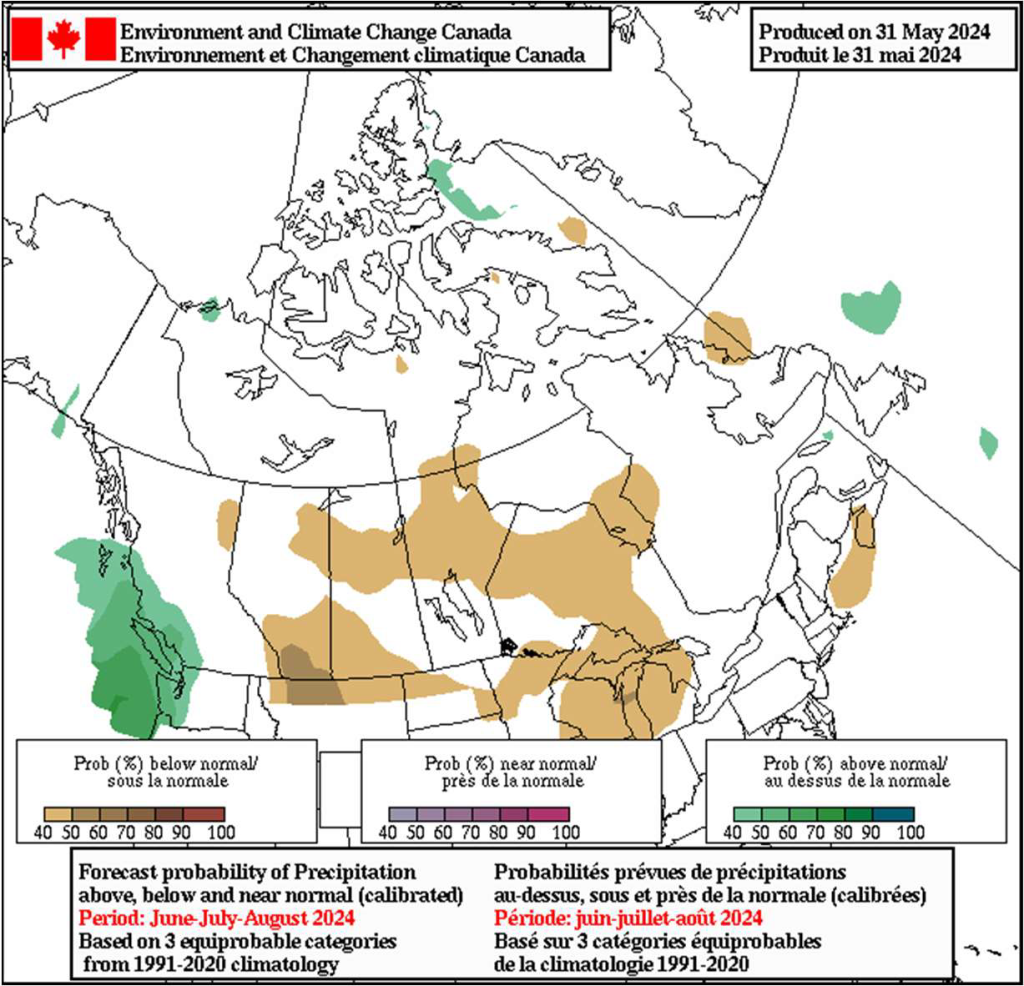Environment and Climate Change Canada is expecting this summer to be warmer than usual across the country, with provinces east of Manitoba getting hit the hardest.
That doesn’t mean B.C. is exempt, the agency says, as hot and dry conditions are expected everywhere, with the exception of the B.C. coastline.
The agency released its summer outlook today, saying B.C. has been dealing with continued drought, low precipitation and wildfire conditions, so it’s important to be prepared for a hot summer ahead.
“Over the eastern part of Canada and the north indicates there’s a high probability of above-normal temperatures for the summer season. It’s important to note that this chart doesn’t indicate how much temperatures are expected to be above normal nor how continuous those temperatures might be, ” said meteorologist Jennifer Smith.
“Daily weather will vary. Expect heatwaves, cool spells, and all the fluctuation summer brings. Those events added up over the course of the June, July, August season, make that summer season story. And in this case, one that is expected to be above seasonal compared to what is climatologically normal.”
BC has been contending with ongoing dry conditions and wildfire activity this spring, particularly in the northeast.
Smith says above-normal temperatures are forecast for most of the province and the prairies, but the probability of high temperatures isn’t as high as it is out east. The B.C. coastline is expected to have average or below-average temperatures, according to the forecast.
“It doesn’t mean all of those parts of Canada won’t experience warm spells, but when we evaluate the season as a whole, the net temperature might not be above what is normal.”
Northern B.C., Alberta and the Northwest Territories have received less-than-normal rain. But Smith says rain is harder to predict and says there’s no clear signal about what to expect in the way of precipitation.

“Canadians need to be ready for a warmer summer that could be met with drier conditions over the rest of the country,” said Smith.
“This is a national scale outlook, so the actual impact will greatly depend on local day-to-day weather.”
In addition to the outlook, the agency has developed a system that calculates the contribution of climate change to extreme weather events within a week of their occurrence.
It also announced a new website called “FireWork” with a map predicting the movement of wildfire smoke across North America over the course of 72 hours.
The map is expected to be up and running by the end of July.